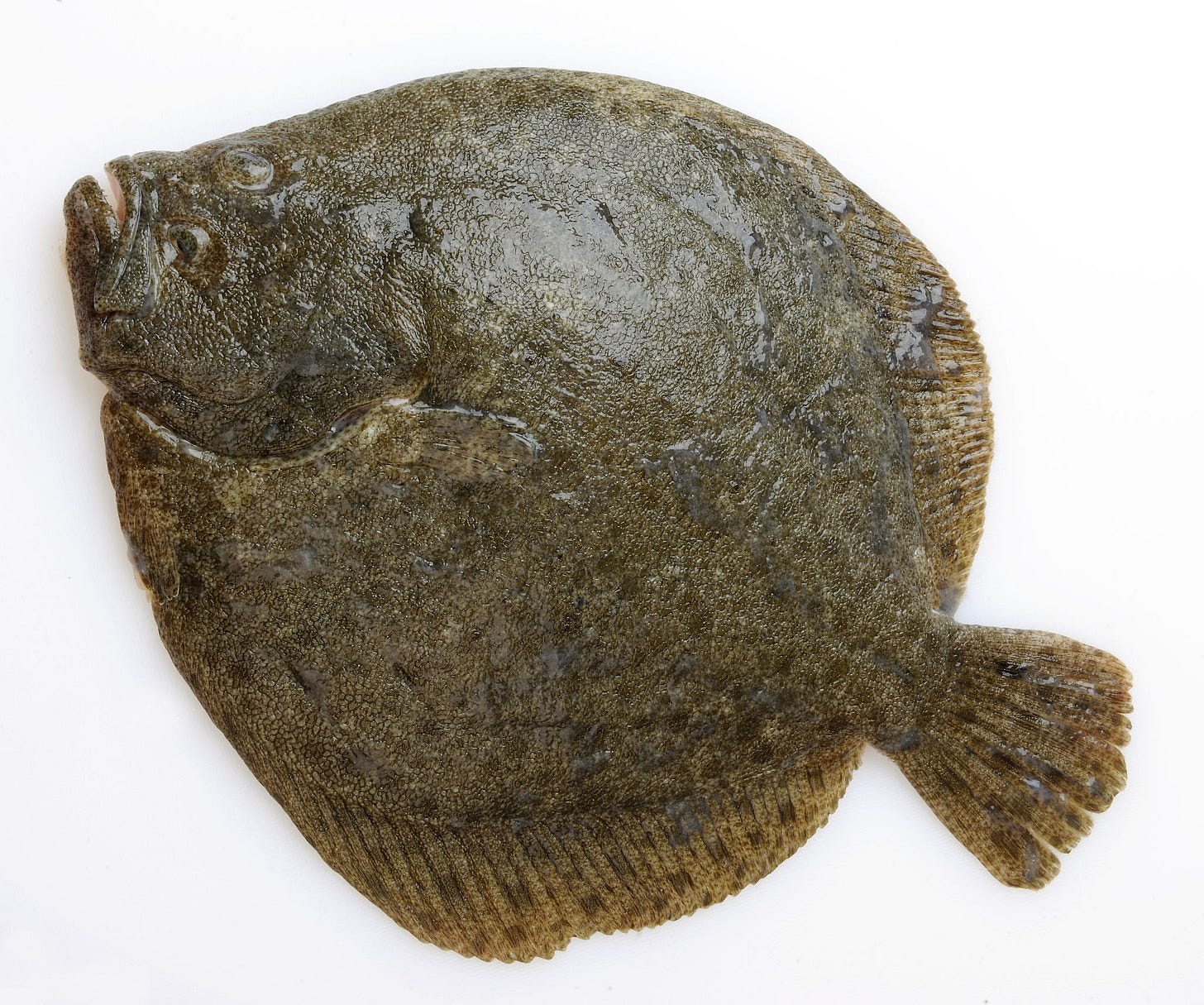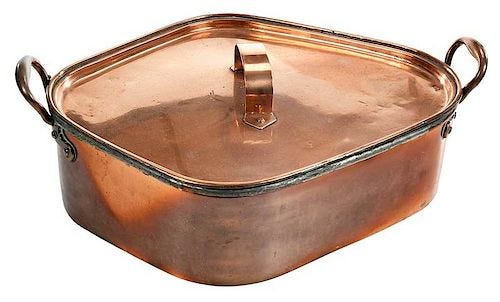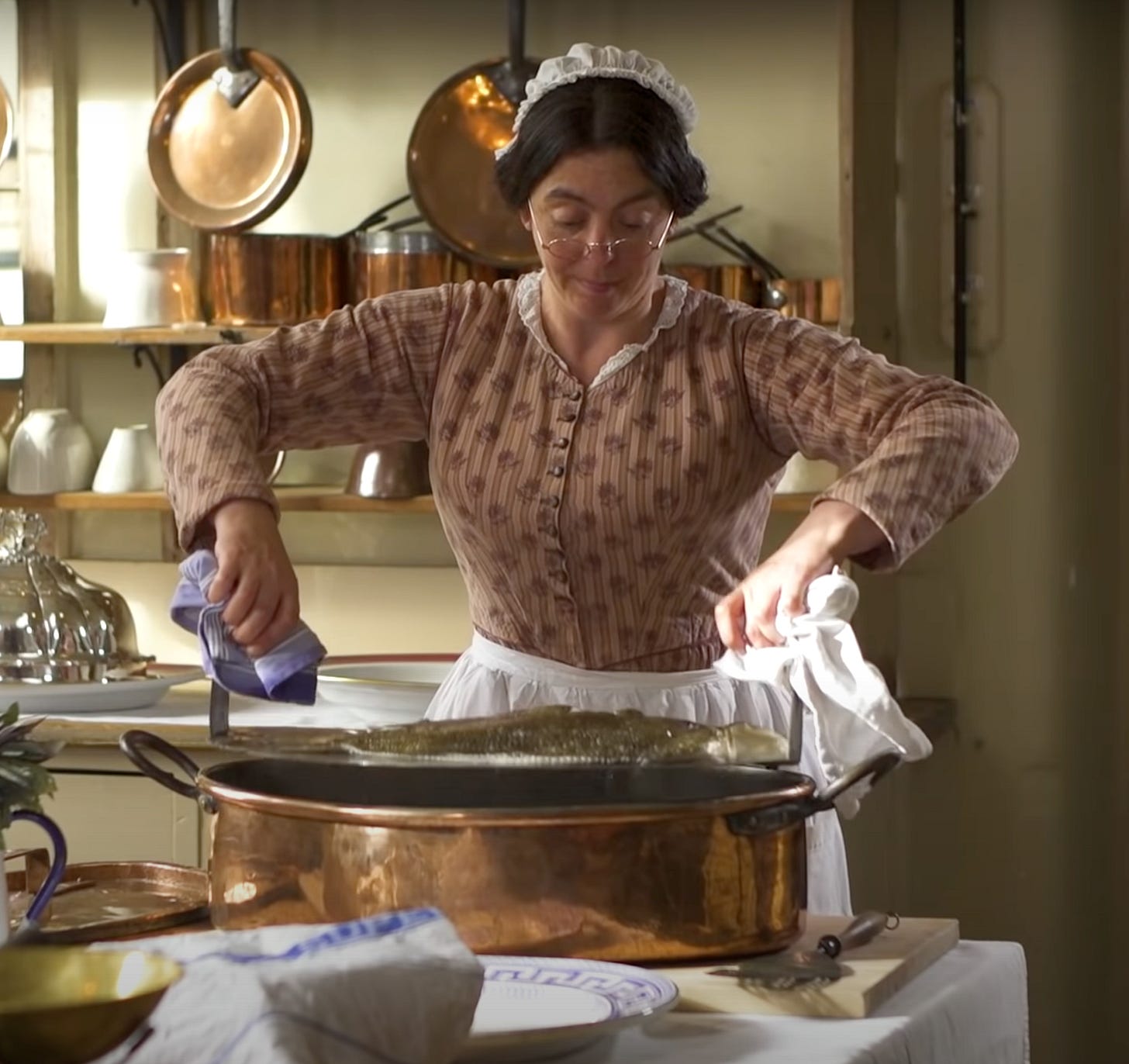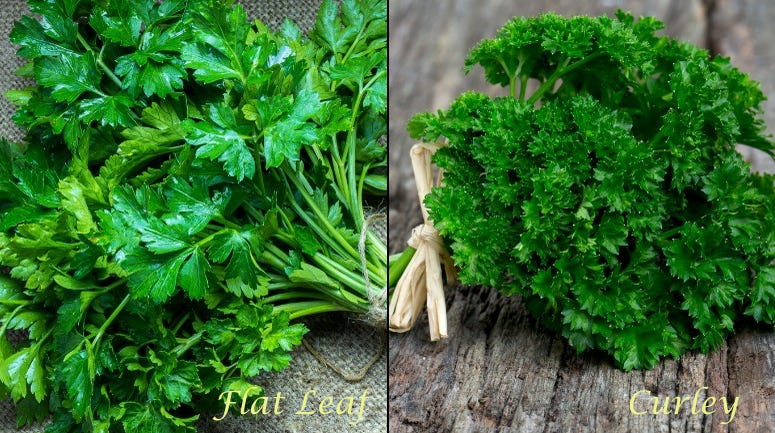Turbot Avignon
April 26, 1939
From Tobias Churton’s Aleister Crowley in England (p. 117), he writes something I am looking forward to confirming in Crowley’s diaries personally this coming December, when I head back to the Warburg for research: “Greta and one Phoebe came on April 26 for Turbot Avignon: ‘Poach steaks in fish fumet and Chablis; reduce cooking-liquid; add cream and cover with new potatoes and chopped parsley.’
Turbot (tur-but) is a fish. But not just any fish. It is the king of culinary fishes and is considered very grand, expensive, and was a favorite of Queen Victoria. It is a very large, left-eyed flatfish that is farmed in the North Atlantic, Mediterranean, and Baltic and Black Seas. The Roman poet, Juvenal, from the late 1st or early 2nd century, wrote a satirical poem, The Emperor’s Fish which suggests it was a delicacy during the Roman empire. Turbot is diamond-shaped and to serve it properly is to serve it whole which requires a specially-shaped pan in which to cook it.
This is a turbot steamer or poacher, inside of which is a perforated liner with upright handles on either end which enable the cook to lift out the whole cooked fish with ease. I’m ashamed to admit that I swiped this screenshot from the fabulous YouTube English Heritage page which demonstrates tons of accurately portrayed Victorian recipes:
These specialty cookers are not cheap; I’ve priced them in the $400 range which is quite a bit of money to spend on something that has one single use. Well, except they are also good for steaming small puddings, so there is two uses.
Analyzing Crowley’s course title, Turbot Avignon, I can surmise he is invoking the flavors of Provence, France, as Avignon is the capital of Provence, encased within old city walls, dating back to the 14th century. Because of its close proximity to the Mediterranean, the region is known for opulent, fresh seafood offerings and the warm climate produces superior vegetables, such as asparagus. To create this dish at home, one could substitute flounder, cod, striped bass, fluke, or haddock. You want a firm, flat fish.
Crowley’s recipe is one of utmost simplicity, but that is part of what makes it lovely and easy to replicate. Fumet is simply a white stock from fish bones and aromatic vegetables. First the vegetables are lightly sautéed; cooked until soft, but not taking on any color. It becomes more full-flavored with a bit of reducing and that flavor will transfer to the fish and also enrichen it. This is one of those recipes that can be easily tweaked depending on your desired flavors; chopped garlic or fennel (and their fronds) with some crushed tomatoes and crumbled saffron for a more Mediterranean style, or lemongrass, fresh ginger, and a star anise or two for Asian-styled fumet.
Makes about two quarts:
2 pounds fish bones or heads (do not use salmon; it is too oily)
2 tablespoons neutral-flavored oil (canola or sunflower) or butter
1 celery stalk, cut into chunks
1 large leek — white and green parts included — cut into half-moons
3 or 4 mushrooms, coarsely chopped
1 garlic clove
1 bay leaf
2 to 3 sprigs fresh thyme
5 whole peppercorns
1 cup or more dry white wine
salt to taste
METHOD
Wash and chop the vegetables, known as mirepoix.
Briefly sauté the fresh vegetables in butter or oil (I always use butter, as it makes everything taste a little richer).
Add in the fish bones to the mirepoix and cover with cool water. Heat to boiling and skim off scum that appears.
Add wine and salt to taste. Simmer for at least 30 minutes and strain (simmer for an hour for a more concentrated flavor).
This is the basic recipe for a fish stock like Crowley would have made. The rest of his instructions are fairly straight forward, noting that his white wine of choice to add to his fumet is a Chablis, a crisp, acidic white wine from the Burgundy region of France, with a bit of minerality and “flintiness.” Poaching as a cooking technique has lost some of its glamor, which is a shame for it is a lovely way to prepare whole fish easily for guests as its presentation can be quite striking, takes very little time, and is practically fool-proof. Try it once with a whole fish before tackling fillets, which will have the tendency to fall apart unless it be a very firm fish. It is relatively quick as well; once the poaching liquid is at a gentle simmer (not a full, rolling boil), slide the fish in and maintain a heat that doesn’t quite boil, but is just above simmering. Ideally, you want to keep the liquid from going above 160°, but if it does, just turn the heat down a bit.
The length of time obviously depends on the temperature of the poaching liquid and the thickness of the fish, but could be done as quickly as 7 minutes and usually not much longer than 15. You can use a thermometer to check as most fish are cooked to approximately 135°; nudge with a utensil as the flesh should be very soft and just starting to flake apart. Remove the fish and keep warm while raising the heat to the reduce the poaching liquid to a scant 1/2 cup and pour in a splash — 1/4 cup, give-or-take — of cream.
Crowley then pours this over the fish and some new potatoes. It is a common mistake to believe that any small potato is “new,” but new potatoes have been freshly dug and brought to the market without curing. Most grocery store potatoes have been stored for several weeks to set the peel and heal nicks or cuts so they last longer. You can tell a new potato by rubbing its skin a little with thumb and it should scrape fairly clean down to the flesh, which is slightly moister and sweeter. If you have a farmer’s market nearby, see if any sellers are offering new potatoes versus buying any from a grocery store.
Lastly there is the chopped parsley. Don’t discount how much freshly chopped Italian parsley adds to the flavor of a dish. It is more than a garnish and can elevate even simple dishes like a salad with its bright, clean flavor. I’d advise against using curly parsley, which is more bitter and discordant with the richness of this seafood offering.





